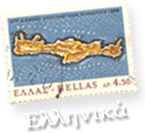HISTORY OF HERSONISSOS
Introduction
The present name of the town - Hersonissos -is of Greek origin, it is one of the few names related to Cretan cities, which remained unchanged since the ancient times. The name is registered since the 5thcentury, printed on coins, inscriptions and texts, seen in variations of Herronasos, Hersonasos, Heronisos and Heronissos. To avoid confusing the town with other similar ones, it was addressed as «Heronissos of Crete».
ADMINISTRATIVE AND FINANCIAL DEVELOPMENT
During the classical period (500-323 B.C.) the city was the administrative and financial center of the region. It was an independent city, with its own political structure and currency.
UNDER THE INFLUENCE OF THE CITY OF
During the Hellenistic years Hersonissos (323-67 B.C.) was under the influence of the city of
THE VENETIAN PERIOD
Approaching the Roman period (67A.C.-323A.C.), Hersonissos’ importance outruns the city of
HARBOR
The geographic position of Hersonissos enabled it to be among the most important harbors of the island. Onorio Belli (Italian doctor-botanist) describes the
Most of the findings of that period come from the establishments of the port. Even today the ruins of the piers, the anchorage and the docks are still visible at the harbour.
AQUARIUM
AQUEDUCT
The aqueduct of Hersonissos is one of the most remarkable technical projects of the Roman period showing the prosperity of the city. It’s a large and modern aqueduct, which attracted the interest and the admiration of the future travellers.
The ruins of the large aqueduct can be found in the area above the contemporary town. The inhabitants of the region even today refer to the area as “Palaces”, giving a different meaning to the ruins and function of the structure.
PROSPERITY AND ABANDONMENT OF THE CITY
During the early Christian period, Hersonissos was considered to be one of the most significant centers of the island. The city came in contact with Christianity at the beginning of the 4th century.
During the period of the city’s prosperity, between the 4th and the 5th centuries, many earthquakes and attacks of pirates led to the definite abandonment of the city in the 7th century. The area will be inhabited again but not before the beginning of the previous century.
«SARAKINO», EARLY CHRISTIAN FOUNTAIN
Near the harbor and the present coastal road there is a fountain with the shape of a pyramid. On its edges one could see small rungs and its sides were decorated with mosaics. The fountain is dated at the early Christian period (323-828).
Τhe mosaic describes a scene at the sea. One can see small fishes, sea birds and a fishing boat with two fishermen, one standing at the bow and one pulling up an octopus at the stern. On the lower part of this depiction, there is a young man wearing a blue hat and on whose back there is a depiction of a cuttlefish catching an eel.
CHURCHES IN THE AREA
The ruins of three Byzantine churches have been found in Hersonissos:
Saint Nikolaos
The small temple of Saint Nikolaos, dated between the 17th- 18th century, is built on the ruins of an early Christian basilica of the 6th century, under which there are also ruins of a Roman temple. On the southeast corner of the temple there is a part of a mosaic floor.
Basilica
Another early Christian Basilica, dated around the end of the 5th century, has been found on the rock of Kastri and is considered to be unique on the island due to its unusually large dimensions.
Saint George – Saint Nikolaos
It’s a small church of the middle Byzantine period, of two saints, Saint Nikolaos and Saint George. It is located in the peninsula, west of Hersonissos.
Saint John Monastery
Between Piskopiano and the old village of Hersonissos, during the Venetian rule, a monastery was dedicated to Saint John the Baptist. Nowadays, only the ledger of the monastery maintains its original structure whereas the rest of the monastery has been turned into a cemetery.
HERSONISSOS TODAY
At the same time, though, the neighboring villages, part of the municipality of Hersonissos, (Κoutouloufari, Piskopiano, Ano Hersonissos, Gonies, Potamies, Avdou) still maintain the natural heritage and form an actual example of an even developpement and welfare.




